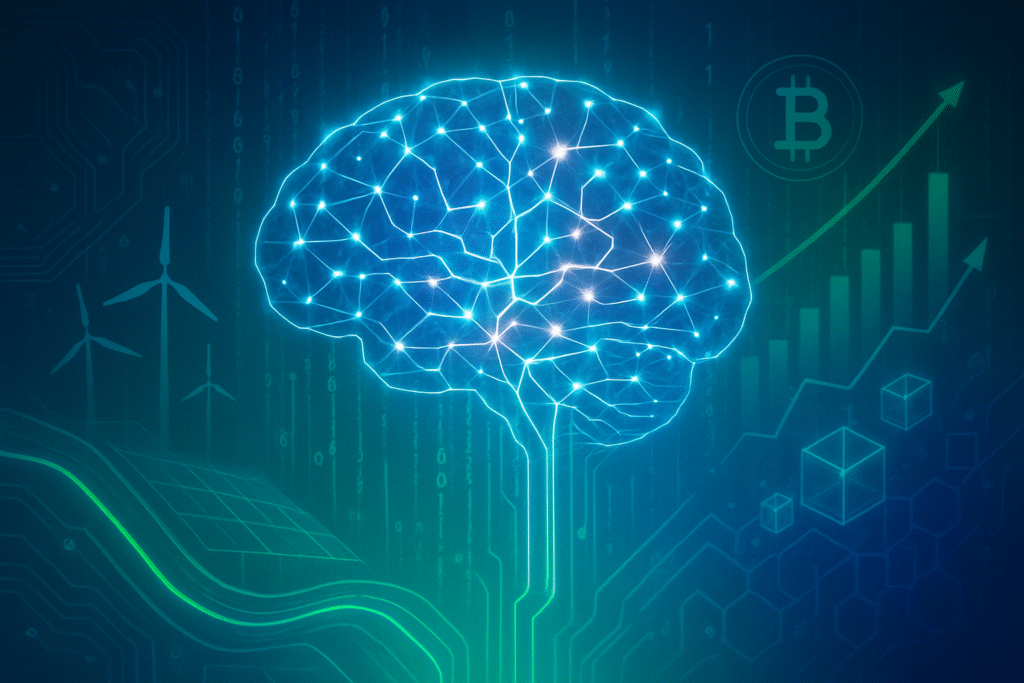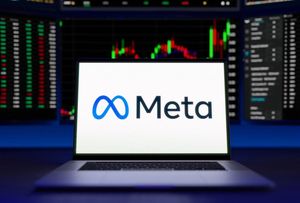
As of October 2025, the United States market is witnessing a remarkable surge, with Technology, Energy, and Cryptocurrency Exchange-Traded Funds (ETFs) spearheading significant gains. This outperformance is not merely a cyclical upturn but a profound reflection of an economy increasingly shaped by relentless innovation, shifting global energy dynamics, and the pervasive, transformative influence of Artificial Intelligence (AI). Investors are flocking to these sectors, drawn by robust growth prospects and the promise of groundbreaking technological advancements, positioning them at the forefront of the current investment landscape.
The Engines of Growth: Dissecting the Outperformance
The stellar performance of these ETFs is underpinned by distinct yet interconnected factors, with Artificial Intelligence serving as a powerful, unifying catalyst across all three sectors.
Technology ETFs continue their reign as market leaders, propelled by strong earnings and an unwavering investor confidence in future growth. At the heart of this surge are semiconductor companies, which are indispensable to the ongoing AI buildout. Goldman Sachs Asset Management, for instance, has expressed optimism regarding the return on investment from "hyperscalers" – the massive cloud infrastructure providers – directly benefiting from the escalating demand for AI computational power. Beyond the core AI infrastructure, the sector sees robust demand in cybersecurity, enterprise software, and IT services, all increasingly integrating AI capabilities. ETFs such as the Invesco QQQ Trust (NASDAQ: QQQ) and the Invesco NASDAQ 100 ETF (NASDAQ: QQQM), heavily weighted towards technology and communication services, have been primary beneficiaries. The S&P 500 Information Technology Sector's notably high Price-to-Earnings (P/E) Ratio underscores the market's strong conviction in its future growth trajectory, driven significantly by AI. Furthermore, AI-driven Electronic Design Automation (EDA) tools are revolutionizing chip design, leveraging machine learning to accelerate development cycles and optimize production, making companies specializing in advanced chip designs particularly well-positioned.
Energy ETFs are experiencing a broad recovery in 2025, with diversified funds posting solid gains. While traditional oil prices introduce an element of volatility due to geopolitical events, the sector is increasingly defined by the growing demand for renewables and energy storage solutions. Natural gas prices have also seen significant leaps, bolstering related ETFs. Clean energy ETFs remain immensely popular, fueled by the global push for net-zero emissions, a growing appetite for Environmental, Social, and Governance (ESG) friendly options, and supportive governmental policies for renewables. Investors are keenly targeting continued growth in clean power and and storage, even as performance across sub-themes like solar and hydrogen may show some unevenness. Traditional energy ETFs like the Vanguard Energy ETF (NYSEARCA: VDE) and SPDR S&P Oil & Gas Exploration & Production ETF (NYSEARCA: XOP) provide exposure to established players in oil and gas. Crucially, AI is also playing a dual role in the energy sector, not only driving demand through data centers but also enhancing efficiency as a predictive tool for weather forecasting, wildfire suppression, maintenance anticipation, and load calculations.
Cryptocurrency ETFs are exhibiting significant outperformance, driven by a confluence of rising institutional adoption, favorable regulatory developments, and broader market acceptance. The approval of spot Bitcoin ETFs in early 2024 was a major catalyst, making it significantly easier for institutional investors to access Bitcoin. BlackRock's IBIT ETF (NASDAQ: IBIT), for example, has seen substantial inflows, leading to remarkable Asset Under Management (AUM) growth. Bitcoin's price has soared to new highs in early 2025, with analysts projecting further appreciation by year-end. Ethereum ETFs are also gaining traction, with institutional interest expected to drive ETH towards higher valuations. The Securities and Exchange Commission (SEC) has fast-tracked the launch of crypto ETFs, indicating a potential surge in new offerings. A particularly notable trend within the crypto sector is the strategic pivot of mining companies toward providing AI and High-Performance Computing (HPC) services. Leveraging their existing, energy-intensive data center infrastructure, firms like IREN (NASDAQ: IREN) and Cipher Mining (NASDAQ: CIFR) have seen their shares skyrocket due to this diversification, attracting new institutional capital interested in AI infrastructure plays.
Broader Significance: AI's Footprint on the Global Landscape
The outperformance of Tech, Energy, and Crypto ETFs, driven by AI, signifies a pivotal moment in the broader technological and economic landscape, with far-reaching implications.
AI's central role in this market shift underscores its transition from an emerging technology to a fundamental driver of global economic activity. It's not just about specific AI products; it's about AI as an enabler for innovation across virtually every sector. The growing interest in Decentralized AI (DeAI) within the crypto space, exemplified by firms like TAO Synergies investing in tokens such as Bittensor (TAO) which powers decentralized AI innovation, highlights a future vision where AI development and deployment are more open and distributed. This fits into the broader trend of democratizing access to powerful AI capabilities, potentially challenging centralized control.
However, this rapid expansion of AI also brings significant impacts and potential concerns. The surging demand for computational power by AI data centers translates directly into a massive increase in electricity consumption. Utilities find themselves in a dual role: benefiting from this increased demand, but also facing immense challenges related to grid strain and the urgent need for substantial infrastructure upgrades. This raises critical questions about the sustainability of AI's growth. Regulatory bodies, particularly in the European Union, are already developing strategies and regulations around data center energy efficiency and the sustainable integration of AI's electricity demand into the broader energy system. This signals a growing awareness of AI's environmental footprint and the need for proactive measures.
Comparing this to previous AI milestones, the current phase is distinct due to AI's deep integration into market mechanisms and its influence on capital allocation. While past breakthroughs focused on specific capabilities (e.g., image recognition, natural language processing), the current moment sees AI as a systemic force, fundamentally reshaping investment theses in diverse sectors. It's not just about what AI can do, but how it's driving economic value and technological convergence.
The Road Ahead: Anticipating Future AI Developments
The current market trends offer a glimpse into the future, pointing towards continued rapid evolution in AI and its interconnected sectors.
Expected near-term and long-term developments include a sustained AI buildout, particularly in specialized hardware and optimized software for AI workloads. We can anticipate further aggressive diversification by crypto mining companies into AI and HPC services, as they seek to capitalize on high-value computational demand and future-proof their operations against crypto market volatility. Innovations in AI models themselves will focus not only on capability but also on energy efficiency, with researchers exploring techniques like data cleaning, guardrails to redirect simple queries to smaller models, and hardware optimization to reduce the environmental impact of generative AI. The regulatory landscape will also continue to evolve, with more governments and international bodies crafting frameworks for data center energy efficiency and the ethical deployment of AI.
Potential applications and use cases on the horizon are vast and varied. Beyond current applications, AI will deeply penetrate industries like advanced manufacturing, personalized healthcare, autonomous logistics, and smart infrastructure. The convergence of AI with quantum computing, though still nascent, promises exponential leaps in processing power, potentially unlocking solutions to currently intractable problems. Decentralized AI, powered by blockchain technologies, could lead to more resilient, transparent, and censorship-resistant AI systems.
Challenges that need to be addressed primarily revolve around sustainability, ethics, and infrastructure. The energy demands of AI data centers will require massive investments in renewable energy sources and grid modernization. Ethical considerations around bias, privacy, and accountability in AI systems will necessitate robust regulatory frameworks and industry best practices. Ensuring equitable access to AI's benefits and mitigating potential job displacement will also be crucial societal challenges.
Experts predict that AI's influence will only deepen, making it a critical differentiator for businesses and nations. The symbiotic relationship between AI, advanced computing, and sustainable energy solutions will define the next decade of technological progress. The continued flow of institutional capital into AI-adjacent ETFs suggests a long-term bullish outlook for companies that effectively harness and support AI.
Comprehensive Wrap-Up: AI's Enduring Market Influence
In summary, the outperformance of Tech, Energy, and Crypto ETFs around October 2025 is a clear indicator of a market deeply influenced by the transformative power of Artificial Intelligence. Key takeaways include AI's indispensable role in driving growth across technology, its surprising but strategic integration into the crypto mining industry, and its significant, dual impact on the energy sector through both increased demand and efficiency solutions.
This development marks a significant chapter in AI history, moving beyond theoretical breakthroughs to tangible economic impact and capital reallocation. AI is no longer just a fascinating technology; it is a fundamental economic force dictating investment trends and shaping the future of industries. Its pervasive influence highlights a new era where technological prowess, sustainable energy solutions, and digital asset innovation are converging.
Final thoughts on long-term impact suggest that AI will continue to be the primary engine of growth for the foreseeable future, driving innovation, efficiency, and potentially new economic paradigms. The strategic pivots and substantial investments observed in these ETF categories are not fleeting trends but represent a foundational shift in how value is created and captured in the global economy.
What to watch for in the coming weeks and months includes further earnings reports from leading tech and semiconductor companies for insights into AI's profitability, continued regulatory developments around crypto ETFs and AI governance, and progress in sustainable energy solutions to meet AI's growing power demands. The market's ability to adapt to these changes and integrate AI responsibly will be critical in sustaining this growth trajectory.
This content is intended for informational purposes only and represents analysis of current AI developments.
TokenRing AI delivers enterprise-grade solutions for multi-agent AI workflow orchestration, AI-powered development tools, and seamless remote collaboration platforms.
For more information, visit https://www.tokenring.ai/.






